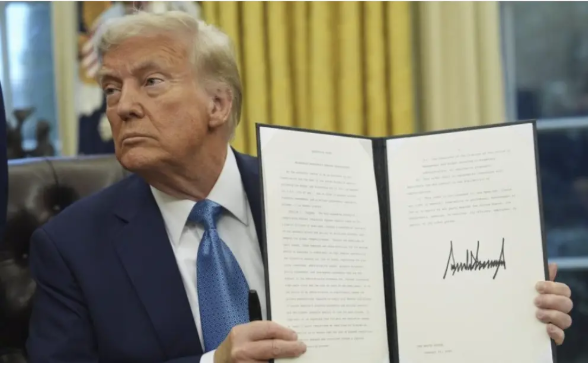The U.S. government’s aggressive tariff policies targeting Chinese goods, including safety footwear, have sent shockwaves through global supply chains, particularly impacting manufacturers and exporters in China. Effective April 2025, tariffs on Chinese imports surged to 145% under the "reciprocal tariff" framework, additional levies tied to fentanyl-related concerns. This escalation has forced safety shoe exporters to rethink strategies, navigate cost pressures, and explore new market opportunities.
Industry-Specific Impacts
Safety shoes, categorized under HS Code 6402, face steep tariffs that threaten profit margins. For instance, a pair of Chinese-made safety shoes costing $20 to produce now incurs $5–$7 in tariffs under the new 20–30% rate, pushing retail prices up to $110. This has eroded China’s competitiveness in the U.S. market, where 137.4 billion RMB ($19 billion) worth of safety shoes were exported in 2024.
The crisis is compounded by supply chain disruptions. Many manufacturers previously shifted production to Southeast Asia to avoid U.S. tariffs, but Vietnam now faces a 46% tariff on footwear exports, further squeezing margins. For example, Nike, which sources half its shoes from Vietnam, may need to raise prices by 10–12% to offset costs.
Corporate Responses and Innovations
Chinese safety shoe exporters are adapting through diversification and cost optimization. Fujian Province, a major manufacturing hub, has seen companies like Zhangzhou Kaista Trading pivot to high-value products such as anti-static and anti-impact shoes, achieving a 180% export growth in 2024. Others are leveraging free trade agreements (FTAs) to reroute shipments. For instance, Guangdong Baizhuo Shoes uses RCEP benefits to export to ASEAN markets, reducing reliance on the U.S..
Technology upgrades are another strategy. Companies like Putian Customs-certified manufacturers are investing in smart safety shoes with built-in sensors for real-time hazard detection, aligning with global demand for ergonomic and IoT-integrated PPE. This shift not only enhances product value but also qualifies for tariff exemptions under U.S. HTSUS 9903.01.34 if U.S.-sourced components exceed 20%.
Market Reconfiguration
The U.S. safety shoe market is bracing for shrinking demand. Retail sales of footwear plummeted 26.2% YoY in Q1 2025 due to inflation and tariff-driven price hikes. Meanwhile, China is emerging as a critical alternative market. International brands like On Running plan to double down on China, aiming for a 10% share of global sales by 2025.
Analysts predict a $2.2 billion global safety shoe market expansion by 2029, driven by stricter safety regulations and industrial growth. Chinese firms are well-positioned to capture this growth by focusing on green materials and customization, such as anti-slip designs for construction and oil rigs.
Long-Term Outlook
While tariffs create immediate challenges, they also accelerate structural shifts. Exporters are adopting a "China+1" strategy, establishing backup production in Mexico and Latin America to bypass U.S. tariffs. Policy-wise, China’s retaliatory tariffs on U.S. goods and WTO disputes over "weaponized tariffs" add uncertainty.
In summary, the U.S.-China tariff war is reshaping the safety shoe industry, forcing innovation and diversification. Companies that prioritize agility, technological integration, and emerging markets will likely weather the storm, while those reliant on traditional supply chains face significant headwinds.
Choose Tianjin GNZ Enterprise Ltd for your safety footwear needs and experience the perfect blend of safety, fast reply, and professional service. With our 20years experience production, you can focus on your work with confidence, knowing that you are protected every step of the way.
Post time: Apr-24-2025






